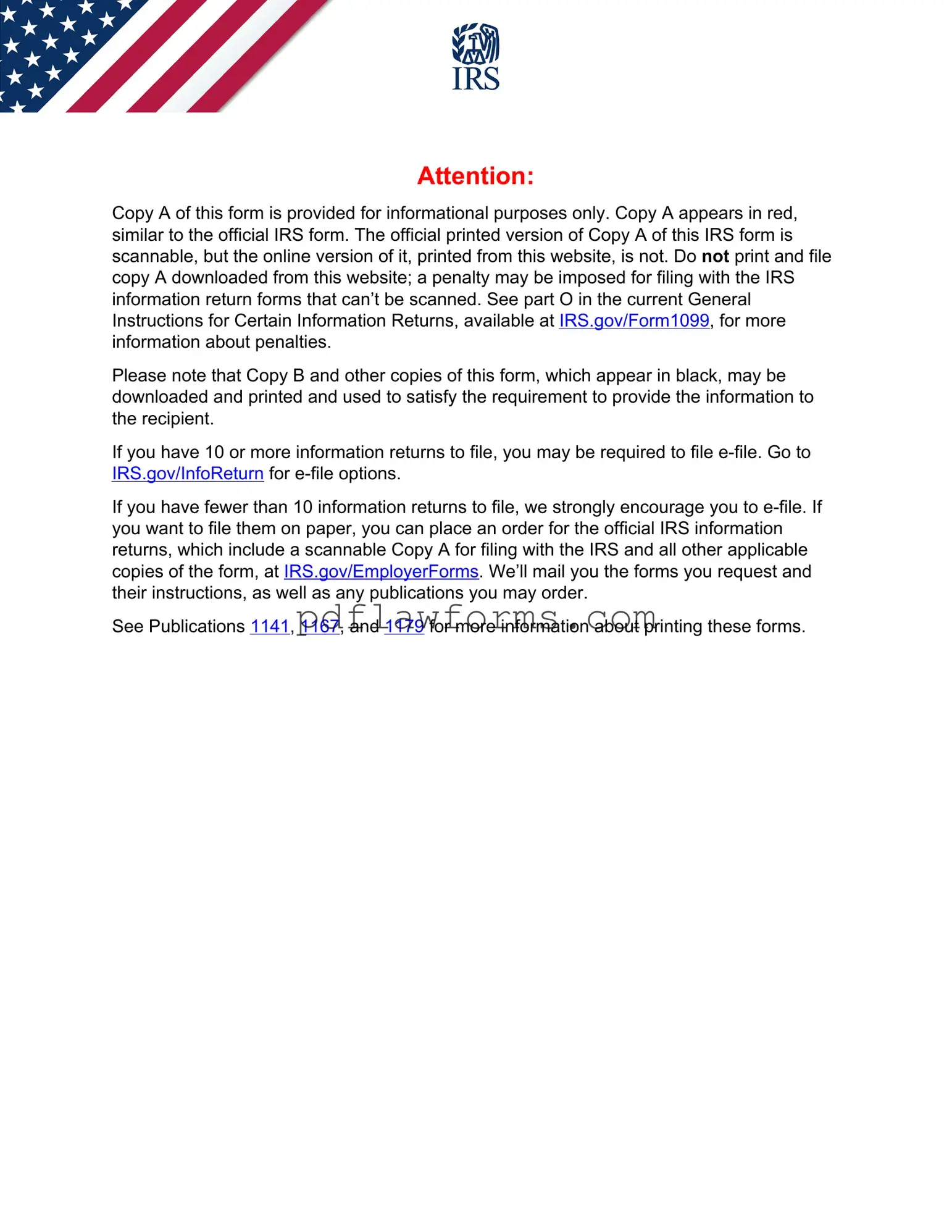Filling out the IRS 1099-MISC form can be a straightforward process, but many people make common mistakes that can lead to complications. One frequent error is providing incorrect taxpayer identification numbers (TINs). If the TIN does not match the name on file with the IRS, it can cause delays and issues with tax reporting.
Another mistake often seen is failing to report all required payments. The 1099-MISC form requires reporting of various payments, including rents, royalties, and non-employee compensation. Omitting any of these can lead to discrepancies in tax filings.
Many individuals also overlook the importance of checking the recipient's information for accuracy. This includes ensuring that the name, address, and TIN are correct. Errors in this information can result in the recipient not receiving their copy of the form, which can lead to confusion and potential penalties.
Using the wrong box on the form is a common error as well. Each box on the 1099-MISC form is designated for specific types of payments. Misplacing a payment in the wrong box can lead to misreporting and could trigger an audit.
Another mistake is not sending the form to the IRS on time. The deadline for filing the 1099-MISC form is typically January 31st for non-employee compensation. Late submissions can result in penalties, which can add unnecessary stress to the filing process.
Some people forget to provide copies to the recipients. Each person or entity that receives a 1099-MISC must get their copy by the deadline. Failure to do so can lead to confusion and potential issues with tax compliance.
In addition, not keeping accurate records can be problematic. Proper documentation of payments made throughout the year is essential for completing the form accurately. Without good records, it becomes challenging to ensure that all payments are reported correctly.
Another common mistake is not understanding the reporting thresholds. The IRS has specific thresholds for different types of payments. Failing to report payments that exceed these thresholds can lead to penalties.
Some filers may also forget to sign and date the form. While it may seem minor, a missing signature can render the form invalid, leading to complications in processing.
Lastly, many people do not seek help when needed. Tax laws can be complex, and if there is uncertainty about how to fill out the form, consulting a tax professional can save time and prevent errors.
